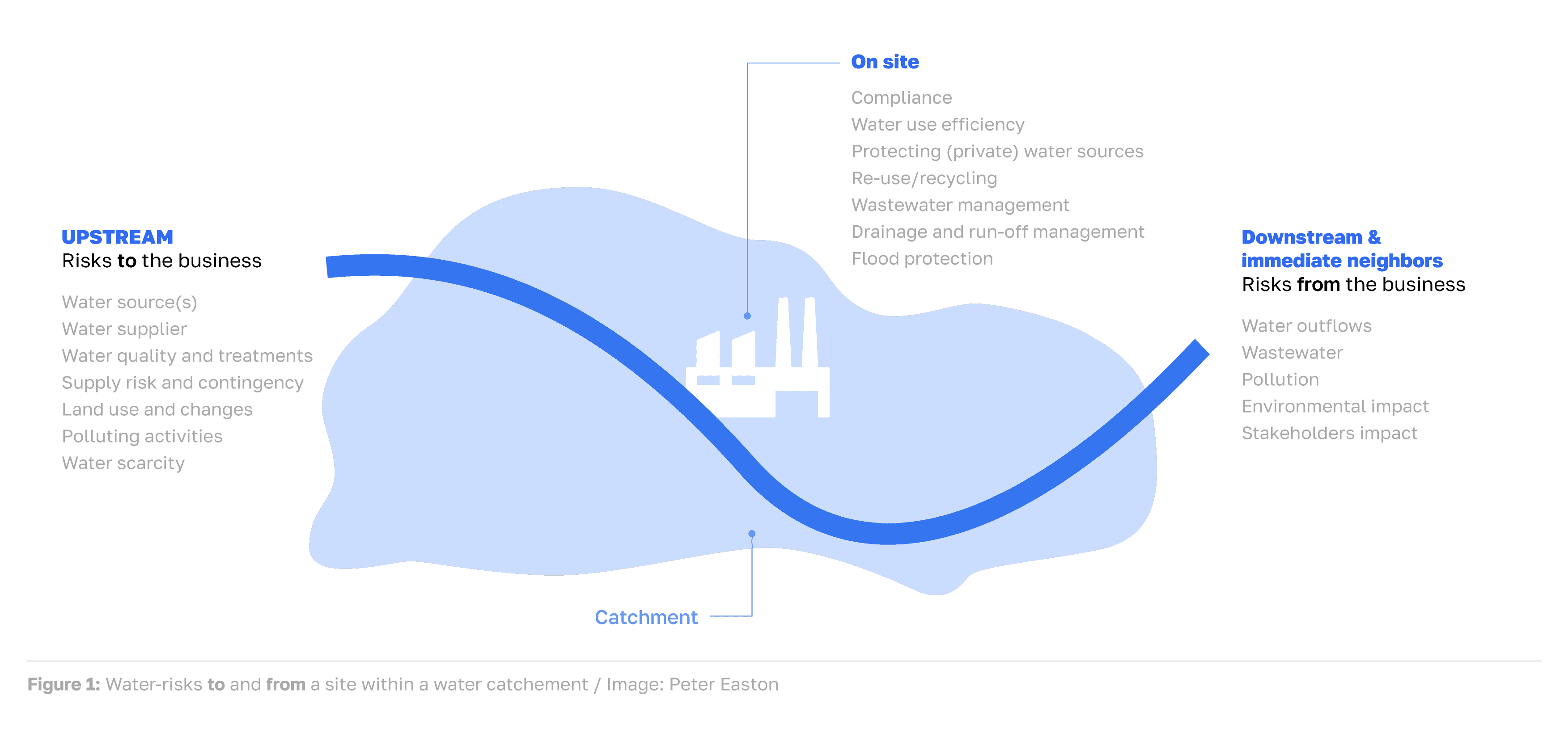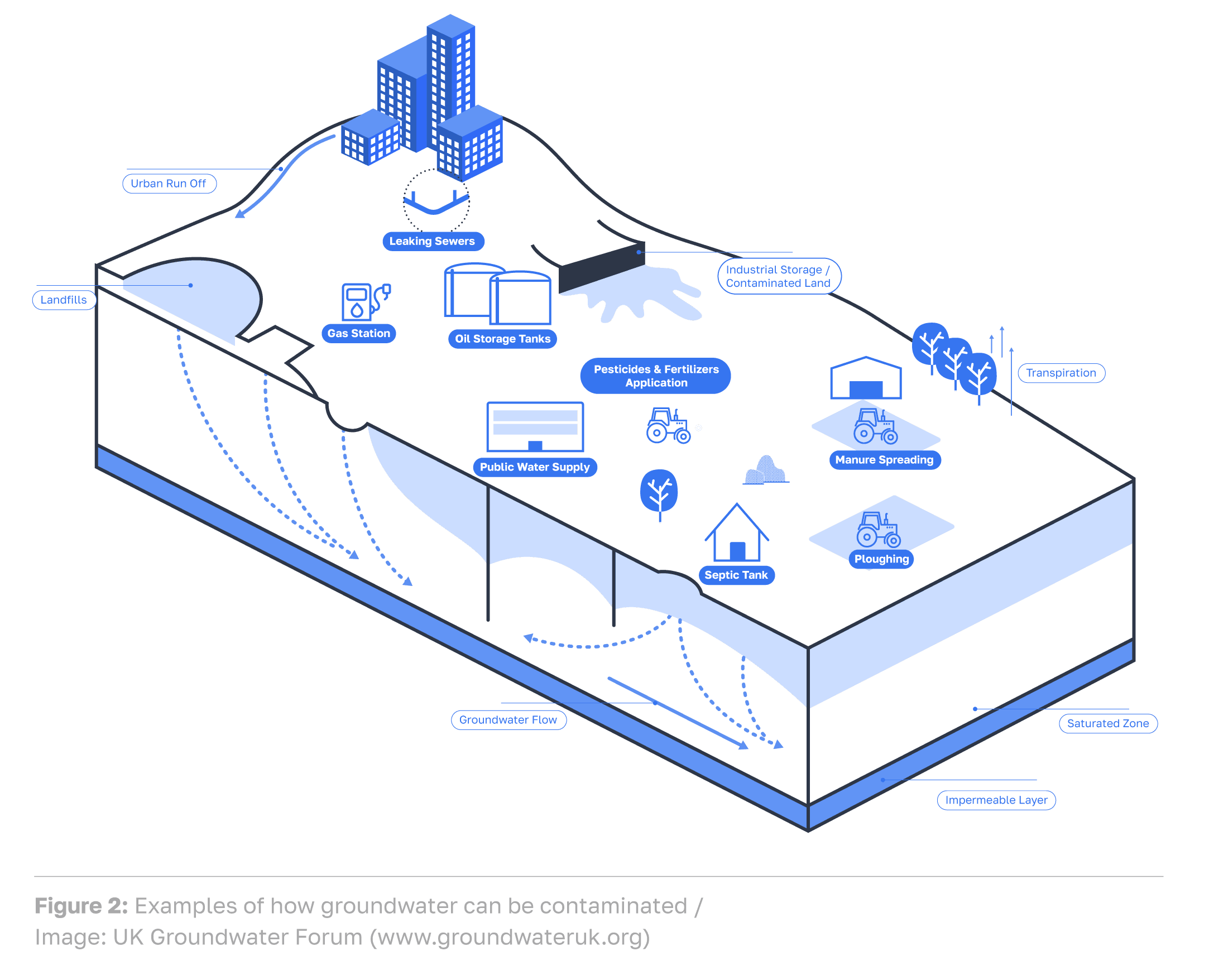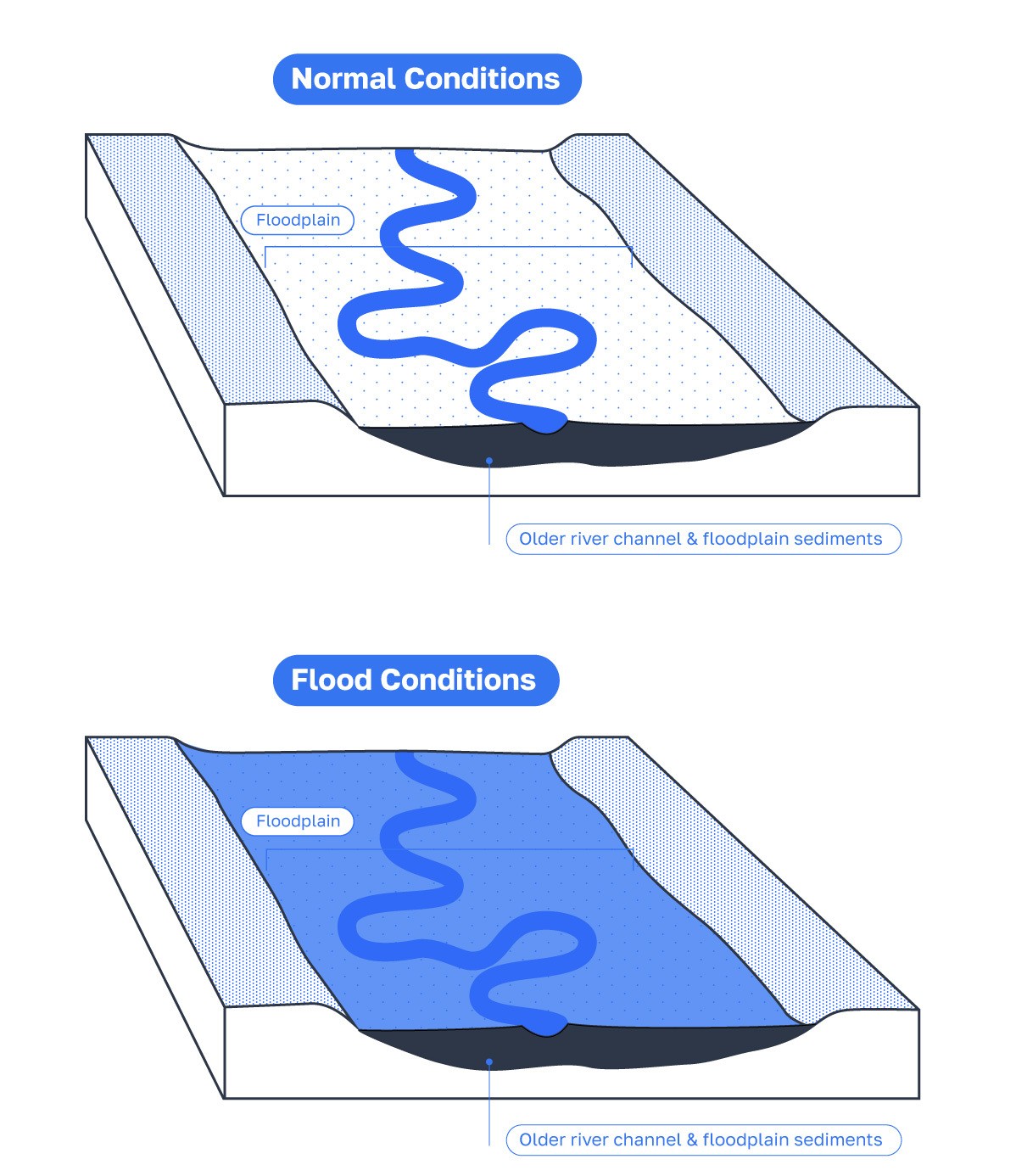We hear a lot about imminent and increasing water-related risks around the world associated with scarcity, pollution, extreme weather and flooding. With the need to meet the water needs of a growing population of more than 8 billion, for food, industry and drinking water, the pressures can only increase.
This article discusses the most important physical risks of water scarcity, water quality and flood. Water risk is not only about knowing whether or not you have a problem. Its purpose is to identify current risks and problems to then inform on the best mitigation actions or solutions. The aim is to ensure we can maintain the water availability and quality we need for both human and environmental needs. Often this means finding ways to do the same with less water. In some cases, it means finding alternative sustainable water sources, and in the most extreme cases, selecting an alternative location for an operational site.
An operational site dependent on water must address two main components of risk:
Risks to its own business needs
Risks it may impose on nature and surrounding communities

The principal geographical area of interest is the catchment, most commonly based on the river basin – the surface water catchment. It may also be important to base it on the groundwater basin or a combination of the two, as surface water and groundwater commonly interconnect. Extending your knowledge of water out to the catchment is known as going ‘outside the fence’ or ‘beyond the fence’.
The priority for most businesses is to understand the risks TO itself. Will the business have enough water to maintain its operations and growth? Can its quality standards be maintained -especially important for sensitive industries such as food and drink? Is the site at risk from flooding?
Water stewardship principles also require a business to be aware of the risks it presents to other water users, communities and the natural environment. In addition to ‘doing the right thing’, this is important for reputational risk in a world where customers, consumers and investors are more discerning about the sustainability credentials of the products they buy or invest in.
The following sections present the main aspects of the three physical risk categories.
Water Scarcity
Water scarcity is generally the most challenging risk. While it can be mitigated by finding alternative water sources and by using less water, there can come a point where total water withdrawals in a catchment exceed natural recharge. This problem can rarely be ‘fixed’, except by very expensive – and often environmentally controversial - inter-basin water transfer schemes. Without such schemes, the eventual outcome is either that water users simply have access to less water, or government agencies impose strict regulations to reduce water use.
Examples of water scarcity risk:
Long-term: The total of annual water withdrawals from a catchment exceed the natural annual recharge so that river flows and groundwater levels continually decline.
Periodic Drought: A region experiences an extended period of below average rainfall – sometimes multi-year - whereby water resources become temporarily depleted.
Seasonal: A severe dry season occurs most years whereby water is scarce for a period each year. This can be critical to farmers and businesses without seasonal adaptability.
Economic: A country, region or community suffers from underinvestment in water supply infrastructure. Even in water abundant regions, this can mean that individual homes and businesses have insufficient water access.
Water Quality
Water pollution can impact the natural environment and indigenous communities reliant on natural water sources. For most businesses, water quality problems can be easily ‘fixed’ through treatment. What is important is to be aware of sudden or slow changes that could impact treatment effectiveness. This is especially important for food and beverage manufacturers where any contamination of product could impact consumer safety and reputation.
International regulations require that bottled natural mineral waters are naturally safe to drink without treatments. Thus, in the event of groundwater contamination, an easy fix by treatment is not an option. Poor water quality can have a significant environmental impact on the health of rivers and lakes and the species that depend on them.
Businesses must be careful not to contribute to water quality problems, for example through chemical spillages or untreated wastewater discharges. This also links to reputational risk.
Examples of water quality risk:
Surface water or groundwater contaminated by a spill of chemicals or oils
Groundwater contaminated by agricultural chemicals (pesticides and fertilisers) flushed through the soil into underlying aquifers
Heavy rains wash oils and chemicals off roads into rivers and streams
Untreated (or inadequately treated) wastewater is discharged into rivers or allowed to seep into groundwater. Many regions still have poor wastewater regulations or inadequate enforcement of them.
Sewage. Old and poorly maintained sewer collection systems leak into underlying groundwater.
Saltwater intrusion. High pumping rates pull seawater into coastal aquifers or pull deep saline water up to overlying freshwater aquifers.
Some aquifers have naturally high levels of harmful minerals such as arsenic, cadmium, fluoride or NORMs (naturally occurring radioactive minerals).

Floods
Floods can directly impact a business premises. In addition to human safety, the damage can put a business out of action for long periods or even permanently. The cost of repairing damages can also be high. And where a site is not directly impacted, floods can still impact business continuity by interrupting the movement of goods and employees and by damaged infrastructure of roads, bridges, power supply, etc. According to property insurers FM Global, severe flood damage, in addition to the potentially millions lost through business interruption and repairs, can have a significant impact on stock value due to loss of investor confidence. Floods can also have a large impact on water quality, particularly groundwater when water wells are flooded..
Most river basins experience some periodic flooding because all rivers overflow from time-to-time. If flooding is limited to flood plains and farmland, the risks remain relatively low. What is most important is whether communities or vital infrastructure are at risk. For a business, it is to know whether it is in a flood risk zone.
In many regions, government agencies map flood risk zones. The most common zone to map is the 1-in-100 year risk (1% risk). Other examples are 1-in-50 year, 1-in-200 year and 1-in-500 year risk. A challenge with flood risk is that while a flood may not occur for decades, when it does, it can be highly damaging. The other factor is the risk of complacency assuming the risk is low because no-one living experienced a flood in a given location. Man made climate change is also projected to increase flood risk in some regions through higher or more intense rainfall rates.
We cannot control the weather that causes floods. But humans can influence their impacts, mostly through changes in land use.
Examples of flood risk:
Building on natural flood plains. This pushes flood waters to other areas – upstream or downstream – previously at low risk.
Channelling and straightening rivers. With the loss of the slowing effect of meandering bends and when prevented from flowing onto natural flood plains, flood waters quickly move downstream to put other regions at higher risk.
Removal of woodland and other vegetation in the upper catchment. This results in higher run-off rates, thus filling the rivers more quickly.
Hard surfacing. The roads, car parks and buildings of urbanisation remove the infiltration capacity of the ground resulting in higher run-off rates into drains and rivers to increase flood flows.

In summary
Around the world we face increasing pressures on the three principal physical water risks of scarcity, quality and flood. Water risks are mostly locally relevant with the river basin or catchment as the main geographic scope. Addressing these pressures will require collaboration and partnership between businesses and other catchment stakeholders. Responsible water stewardship requires a business to address not only the risks to itself but to understand and proactively mitigate the risks it may impose on others in the catchment including other business, communities, agriculture and the natural environment. Effective water risk management starts with commitment and knowledge followed by context based actions, ideally through partnerships, to remove and mitigate risks with a view to achieving a water secure world.


